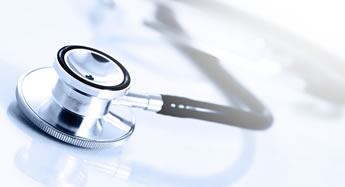The regulation of medical devices - an overview
There are currently three key European Directives that govern the requirements that manufacturers must meet before marketing medical devices.
Two Directives are specific to particular types of device: active implantable devices (e.g. an implantable pacemaker) and in vitro diagnostic medical devices (e.g. an assay to determine a patient's sensitivity to a particular medicine). The third covers all other types of medical devices (anything from dressings, vascular stents and X-ray machines to spectacles).
In the UK, the provisions of the Directives are implemented by the Medical Devices Regulations 2002.
Very recently, the European Commission has published proposed legislation to replace these Directives.
What is the aim of the three Directives?
The present Directives aim to harmonise requirements for putting medical devices on the market in EU Member States.
Medical devices must meet certain "essential requirements" before they can be put on the market in a Member State. The essential requirements are set out in the relevant Directive. If a device is considered to meet the essential requirements it can be marked with a CE mark.
What procedures apply under the Directives?
In order to apply the CE mark, the manufacturer must also follow the appropriate conformity assessment procedure.
 The particular procedure depends on the classification of the device (except in the case of active implantable medical devices). The level of control applied to the medical device via the conformity assessment procedure reflects the perceived risk associated with the device, depending on its classification. So the lowest classification (low-risk devices) permits the manufacturer to make a self-declaration of conformity while, for devices which occupy one of the higher classifications (and for all active implantable medical devices), conformity is assessed to a greater or lesser extent by a Notified Body (an independent entity that has been designated by the national regulatory body).
The particular procedure depends on the classification of the device (except in the case of active implantable medical devices). The level of control applied to the medical device via the conformity assessment procedure reflects the perceived risk associated with the device, depending on its classification. So the lowest classification (low-risk devices) permits the manufacturer to make a self-declaration of conformity while, for devices which occupy one of the higher classifications (and for all active implantable medical devices), conformity is assessed to a greater or lesser extent by a Notified Body (an independent entity that has been designated by the national regulatory body).
The essential requirements and the conformity assessment procedure address characteristics of the device, its manufacture and use, including:
- safety and suitability for purpose;
- the preparation of technical documentation describing the manufacture and specifications of the product, including quality control procedures; and
- putting in place a post-marketing surveillance procedure and implementing any necessary corrective action.
Summary
A manufacturer of a medical device therefore needs to consider the following:
- What type of device is being manufactured and which Directive therefore applies?
- For devices other than active implantable medical devices, what class does the device fall into?
- As a result, what requirements must be met in terms of manufacturing, technical documentation, Notified Body scrutiny and post-market surveillance?
If you have any questions on this article or would like to propose a subject to be addressed by Synapse please contact us.


"Two Directives are specific to particular types of device: active implantable devices (e.g. an implantable pacemaker) and in vitro diagnostic medical devices (e.g. an assay to determine a patient’s sensitivity to a particular medicine). The third directive covers all other types of medical devices."

